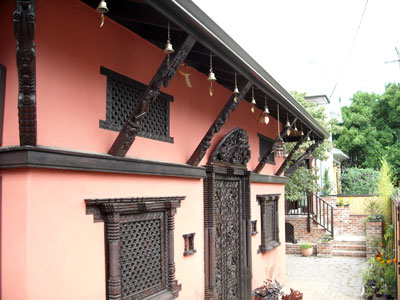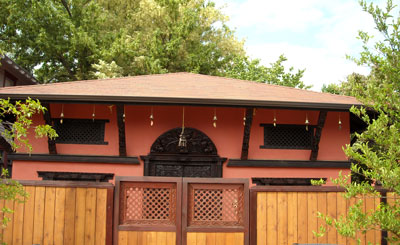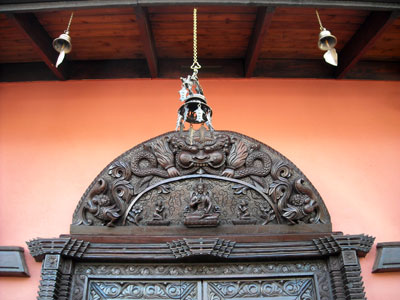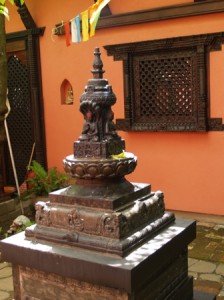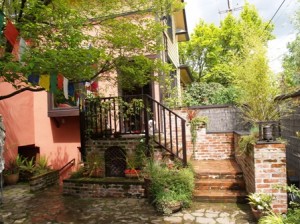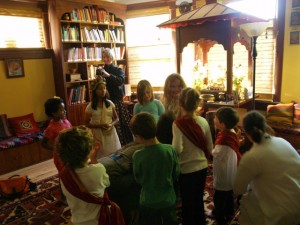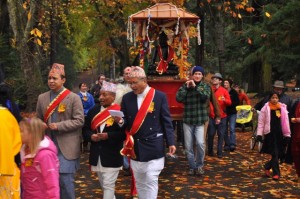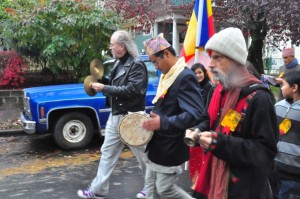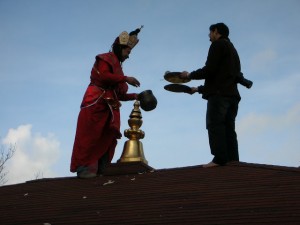“I just want you to let you know Nritya Mandala Mahavihara became a 501(c)3 from 2017. All your donations will be tax deductible !!!”except classes “for deduction receipt please email us your address
Donation
Nritya Mandala Mahavihara
Temporary not working www.nrityamandala.org
please use this on for visit Nrtyamandala Mahavihara www.portlandbaha.org
The name of our study and practice center is Nritya Mandala Mahavihara. Vihara, a Sanskrit term (Baha or Bahi in Newar), connotes a Buddhist monastic center, a complex for meditation, ritual, and study, as well as practicing the sacred arts. It houses a library for the scriptures, a main temple, other shrine rooms, residence ‘monks’ or practitioners [‘householder monks’ and families in the Newar tradition] and inspires dedication to inner practice. In the complex, across the courtyard from the temple is a library of mainly books on Buddhism, as well as other traditions, books on Sacred Arts of many traditions, Newar traditional Buddhist texts and translations as well as scholarly works on many aspects of the Newar religious culture and arts. Also in the house of the Vihara is a community area, along with the necessary kitchen, for gatherings in this space, and room designated for the art of making costumes, ornaments, and masks. https://www.facebook.com/prajwal.vajracharya/videos/10213960269706513/
Nritya Mandala Mahavihara, Beginning Our Second Decade – 12/24/20,
Nritya Mandala Mahavihara was created out of the vision of three people, Pandit Ratna Kaji Vajracharya, Helen Fox Appelle and Prajwal Ratna Vajracharya. It is the realization of Ratna Kaji’s dream to see the richness and wisdom of Newar Vajrayana Buddhism move beyond the borders of Nepal and into the wider world.
Prajwal, the youngest son of this well-known family of scholars and priests in Nepal is an internationally acclaimed charya dancer and the very beloved priest and teacher of Nritya Mandala Mahavihara. It was he who introduced Helen to his father’s vision and his own mission in the West.
It was Helen, with her deep personal experience with Zen, Tibetan and Vajrayana Buddhism over many years, who ultimately chose to commit her time and resources to the building of our carefully crafted temple based on Newar design, using American builders, and integrating many elements, such as beautifully carved struts, doors and windows created by craftsmen in Nepal.
Consecrated in 2009 as the nineteenth mahavihara within Newar Vajrayana Buddhism, the first consecrated as such in hundreds of years, the temple has become a gathering place for Newars and Buddhists of various sects throughout the Northwestern United States. It has become a place of scholarly discussion and Newar cultural affirmation and activity. Our sangha is a mixed sangha, made up in approximately equal parts of Nepalis and Westerners, giving us a wonderful opportunity to simply learn much from one another. And given its accompanying residence, its extensive library and – in normal times – its ongoing rituals, classes and community activities, Nritya Mandala Mahavihara has become an important stopping over place for those from all over the world seeking to both impart and receive wisdom, spiritual insight and beauty in a variety of forms.
As a mahavihara, a teaching vihara, some of the classes it has provided
over the years include Dharma and charya classes – and never charya without Dharma, intensives on various bodhisattvas, and classes on Nitya Puja. Nitya puja is daily puja and is performed in the temple morning and night to worship the deities and imbue the temple with spiritual energy and our pujaris with blessings and growth for their own practices. Other classes provided by Guruju in the temple include weekly classes on sadhana, giti singing and dharani recitation, as well as periodic, ongoing study of the Gurumandalapuja, a beginning to the slow process of preparing both Westerners and Nepalis for the ultimate possibility of Vajracharya priesthood. Classes by others have also been a part of the offerings through the vihara: the study of Sanskrit, sacred mask-making, the making of ritual items, charya costumes and ornaments, even yomaries, yummy yomaries.
As a sangha, we have been blessed during the last decade with the wisdom and knowledge of numerous speakers of note from a wide range of spiritual and other areas of expertise, many of whom were featured during our season-long celebration of our 10th anniversary. Along with visiting monks, priests, lamas and rinpoches, we have heard from Dr. Miranda Shaw on the “Female Cosmology of Newar Buddhism,” Dr. Alexander von Rospatt on “Tantric Priests and Life Cycle Rituals,” Dr. Gautama Vajracharya on distinctions between the artistic elements found in Tibetan and Nepali art, given his art historian’s eye, and Master Chef Bikram Vaidya on “Nepali Food Wisdom.” We’ve also heard Dr. Christoph Emmerich provide unique insight into Newar Buddhism through his careful study of the making, kinds, and use of jewelry among the Newar. And Dr. Miroj Shakya on “Dharani Recitation” and his concern that the use of this powerful tool for healing and purification is diminishing. Because of his proximity, we’ve been blessed multiple times to also hear Ethnomusicologist Dr. Subash Prajapati discuss and demonstrate traditional Nepali musical instruments and songs from throughout Nepal. Many other wonderful speakers and teachers have come to share with us over the years.
Of course, the real lifeblood of any vihara is its rituals. These have been ongoing since before the physical vihara itself was built and their frequency and variety have increased as the sangha and its needs have grown. Guruju performs Life rituals from Macha Janko, the rice feeding ceremony, thru the childhood ceremonies of I’hi , Chuda Karma, Desa Viseka, Bahra Tayegu and others, on to Bibaha, the wedding ceremony, and, ultimately, the old age ceremonies of Bhima Rathahana Puja or Buda Budhi Janko, the 7year 7month 7day celebration, and Deva Rathahana puja, the 888 Celebration on to, hopefully, someday Maha Rathahana puja, where we hope to celebrate for those of us reaching 99 years. And, of course, sadly, there are the death pujas, the Sibalayegu puja, and the annual Sarada pujas. At the vihara we celebrate, as well, the whole range of purification rituals, beginning each year with the Mha puja, the cleansing of the self, perhaps the blessing of a home with the Pancha Bali puja, the Nava Graha Puja, the 9 planet puja, used often at birthdays or to resolve difficult problems, and the elaborate, important and beautiful Homa puja, the fire ritual, for removing obstacles, and so many others to cleanse and purify and heal.
In addition to these are the calendrical celebrations and pujas that build community and solidarity among the sangha, as well as celebrating Buddhist holy days and Newar cultural traditions. Among these is the joyous Buddha Jayanti, which is a big deal here – and not not just for the rituals and the Namasangiti chanting and feasting, but for the singing and dancing, the lighting of 108 butter lamps, and a delightful, animated children’s procession, circumambulating with the baby Buddha around and around and into the temple, where the children then present their own program for the sangha each year. Another cultural celebration is the Sakimala Punhi were we communally create a mandala on the floor of the temple, and opportunities to learn and work together making itahs and gojas and jajanka. All of these sustain the life of our temple and its sangha.
Our fall, season-long, tenth anniversary celebration last year of the original consecration of the vihara was a major event, featuring an extraordinary museum-quality exhibit of Newar cultural and spiritual art, craft and ritual items, a charya performance, a lovely Portland Buddhist community-wide sharing of prayers and chants, as well as a multitude of fascinating, knowledgeable speakers. It concluded with the reconsecration rituals for our vihara and was permeated with lots of time for warm and loving fellowship together.
As we began our second decade, Covid-19 closed our doors to most of our sangha and activities. Of course, Guruju and the pujaris have faithfully maintained the spiritual life of the vihara and Guruju has been called upon to perform those rituals in homes that could not be performed in a larger context during this time. He has also maintained his teaching schedule over these last months by simply moving to an online Zoom format for everything from Dharma classes to charya to regular weekly sadhana, dharani and giti singing classes. Now, as an international sangha, we have been very lucky under his leadership to have had ongoing contact with him and the Newar Vajrayana Buddhism so dear to us, without in any way having to compromise our health or that of our family members.
As we look forward to the decade before us, a time when the temple itself can be reopened and in-person activities can resume with fellow sangha members, as well as with those coming from afar to teach and learn, we are grateful for all we have gained during this inner time of reflection, meditation and spiritual growth, and really look forward to a time of outer celebration and joy, a time of greeting and sharing and learning from one another again. We intend to retain what we have gained over this time, be it a greater depth in our meditation or a greater facility with Zoom. We also intend to reach out, expand and embrace visitors and newcomers, continue activities and trainings that were previously begun, bring in additional scholars, begin new programs – grow and move forward
into this new decade in what we hope will be a way that benefits all sentient beings.
by Kuon Hunt
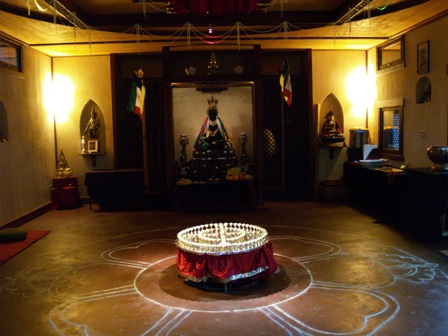
Inside the Temple: Temple floor with Lotus Mandala and 108 butter lamps for “Buddha’s Birthday Celebration, 2012”
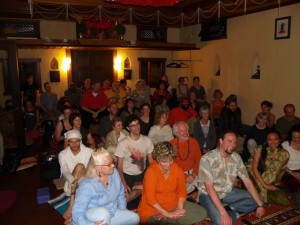
Inside the Temple: Program participants during Lama Tharchin’s talk on “The Sacred in Everyday Life, 2012”
Daily Ritual and Meditation Open for observing or meditation, during the following times:
Weekdays | 8am to 9am Weekends | 9am to 10am
To keep the sanctity of the temple, a traditional ritual with meditation is performed daily. Open for observing or meditation at this time. Enjoy tea with Prajwal when he is in town.
Click for More Dance Mandal Photos on Picasa Web Gallery:
https://get.google.com/albumarchive/117862561526821707089
Consecration News
The 3-day consecration ceremonies were held on the auspicious dates of November 9, 10, and 11, 2009. The procession for the main Buddha statue was on Nov 6, 2010. Ground-breaking for the temple was in March of 2008 and the site was completed in the fall of 2009. Next came purification and empowement of the space and the elements. To affirm its roots in and continuity of the ancient Newar traditions, two elder Buddhist priests from Kathmandu came to perform the ritual ceremonies along with Prajwal, consecrating the temple and vihara in the traditional manner. They empowered the sangha to perform the daily meditations and ritual that will continue to enhance the spiritual potential of the temple and Vihara, as well as offering an oppurtunity to consult with them and benefit from their expertise regarding the ongoing ritual life of the temple. Now the temple is the ideal environment to dance the deities as ritual and perform traditional ceremonies, as well as be a place of daily meditation and devotion open to all those dedicated to profound practice.
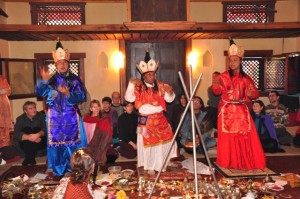
Two elder Buddhist priests from Kathmandu came to perform the ritual ceremonies along with Prajwal, consecrating the temple and vihara in the traditional manner.

